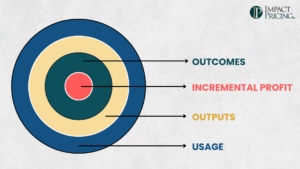You can listen to the full audio version of this blog we call — Blogcast.
Two weeks ago I defined Context Driven Pricing as charging what a buyer is willing to pay (WTP). The second tenet of Context Driven Pricing is: willingness to pay is malleable. Many people think of WTP as a fixed number, but your actions influence it. Through effective value selling, smart marketing, and an understanding of human psychology, you can actively shape how much customers will pay for your products and services.
The Foundation: Selling Value
The most powerful way to influence WTP is through effective value selling. When you demonstrate and quantify value to buyers in ways that matter to them, they more easily realize your offer is worth the investment. The key is helping buyers recognize and quantify the total value they receive.
The goal of selling value is to uncover, demonstrate, and quantify the real value you deliver to each buyer. This isn’t about manipulation – it’s about clearly articulating your true value proposition so customers can make informed decisions about what your offer is worth.
Marketing’s Critical Role
Marketing plays a vital role in shaping WTP before the sales conversation even begins. Smart marketing focuses on communicating value. Marketing materials should emphasize problems solved and results achieved rather than just features. The problems, and therefore the messaging, are different for each market segment.
The Psychology of Pricing
Behavioral economics principles can shape WTP. Here are a few examples:
- Loss Aversion: People hate losses more than they love equivalent gains. Free trials work because customers begin to value the product more just when it’s time to decide whether to keep or return it.
- Anchoring: Mention much higher numbers before quoting prices. This anchors buyers to higher reference points.
- Good-Better-Best: Offering three versions helps simplify decisions while capturing different levels of WTP. Most buyers choose the middle option to avoid potential loss.
There are other techniques you can use to influence WTP. The key takeaway of this post is that WTP is malleable. It’s clay waiting to be molded. Context Driven Pricing says to charge what a buyer is WTP, but this post points out that you can increase that. Pricing isn’t just about choosing the price. It should be about choosing the right price after you’ve influenced WTP.
One powerful corollary of this second tenet is that you can increase WTP without changing your product. You can raise prices as you get better at selling and marketing value. Be honest with yourself. Are you truly selling value now? What could happen if you did?
Share your comments on the LinkedIn post.
Now, go make an impact!
 Tags: pricing, pricing metrics, pricing skills, pricing value, willingness to pay
Tags: pricing, pricing metrics, pricing skills, pricing value, willingness to pay













